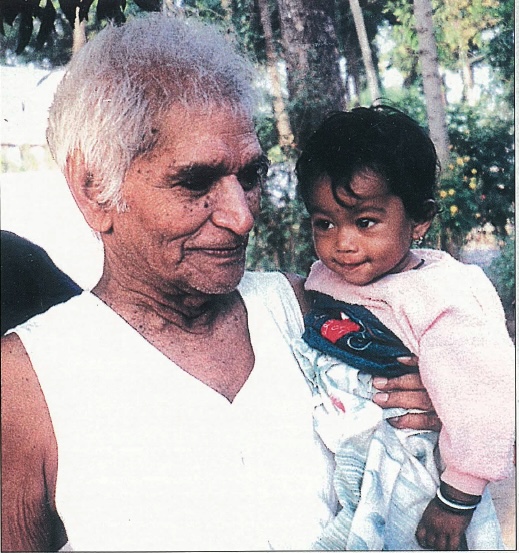By Rita Frenchman
Baba Amte loved the lepers of India and wanted to help them. Inspired by the Hindu principle of nishkama karma yoga, service without expectation of reward, he leased an old abandoned rock quarry from the government in 1951 and created Anandwan, a modern community for lepers called “Forest of Joy.” For this accomplishment he was awarded the famed Templeton Prize. By 1990, Anandwan had a university and was 450 acres large, accommodating 1,400 permanent resident lepers. These residents transformed desolate fields into some of the most fertile farmland in the province, winning prizes in regional agricultural shows. Today, Anandwan’s inhabitants are 2,500 strong and continue to live and grow in prosperity. Rita Frenchman paid them a visit recently. Here is her report for Hinduism Today.
Baba Amte is a great man. he has become famous caring for leprosy patients, fighting the construction of the Narmada Dam, winning prestigious awards and devoting his life to noble social causes. On one of my trips to India, in November of 2000, I wished to see this great man in person. After reaching the Victoria Terminus Railway Station in Mumbai, on my way to his ashram, I rode all night in a third class train compartment to Chandrapur, about 50 miles from Nagpur in Maharashtra. From there, I was driven to Warora, where Anandwan, the ashram started by Baba, is located. Dr. Vikas Amte, Baba’s elder son, and his wife Bharati cordially welcomed me for my three-day visit. Beds, bedsheets and mosquito curtains were all provided. Everything was clean and neat.
During one of our meals, I looked up and saw Baba for the first time. He had come in quietly and was serving food to the 50 or so guests who had assembled there. He is a small, white-haired man with a strong, determined face and a sturdy body. He had a smile for each of us and a kind word for all. Baba stood while he ate. Because of a bad back, he is unable to sit at all. Yet I never saw him even grimace.
Access to the ashram is open. There are no guards or gates to stop visitors. There is a long road through the campus, which runs by buildings housing leprosy patients, cow stables and a hospital. Further down, there are kitchens, workshops, a school for blind and deaf children, and a home for the aged. Of the 2,500 inhabitants now at Anandwan, only four are nonleprosy patients. Everyone is working quietly and diligently. Baba believes strongly that “charity kills, while work brings dignity.” All food and nonfood items are grown or manufactured here, except for salt, sugar and kerosene. The leprosy patients are given medicine regularly. There is a surgical suite where operations occur.
A man of many interests and always a nonconformist, Baba trained in his youth as a wrestler. He also loved to race cars and watch Hollywood movies. He was a particular fan of Greta Garbo, who even corresponded with him for a while. Although from an affluent background, Baba cleaned latrines to understand the nature of the work of members of the scavenger’s union that he led as a young man. After a life-changing boyhood experience of accidentally stumbling onto a dying leprosy patient, Baba became inspired to dedicate himself to the rehabilitation of leprosy sufferers. Today, Anandwan is so successful that its “disabled” lepers have even become benefactors to neighboring
